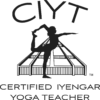Practitioner Spotlight: Yoga expert uses passion for healing to help others.
Tara Bernstein has been practicing yoga for 19 years. After being diagnosed with an autoimmune disease, she turned to yoga and started practicing to re-balance her immune system. A dancer with 25 years of experience, she appreciated how yoga helped her feel more in control of her mind, body, and spirit.
Bernstein found herself drastically improving her health and life, and wanted to pay it forward by helping others with their healing. Now, she uses therapeutic yoga techniques to help people overcome their own chronic pain and illness.
When she’s not teaching, Bernstein enjoys walking in the park with her dog and sharing a home cooked meal with family and friends.
Integrative Practitioner: Tell us about what you do and your involvement in integrative medicine?
Bernstein: I am trained and certified as an Iyengar Yoga teacher with 19 years of study of the school of Yoga founded in India by the great teacher BKS Iyengar. Presently, I am the director/ teacher at University District Yoga
I turned to yoga because of the healing aspect. When practiced regularly, it helps with anxiety, and when having a surgery or living with a disease it can aid in healing with less complications. Yoga also can help alleviate side effects that can come from taking strong pharmaceuticals. I have an autoimmune disease and yoga has helped me tremendously. Integrative Practitioner: What did you do before entering integrative medicine?
Bernstein: Before yoga, I was a dancer and I choreographed dances that brought to light the subjective parts of myself into the objective arena. Crafting my internal reflections into dances came easily.
Integrative Practitioner: Why did you get into this line of work?
Bernstein: I was teaching dance to children and adults in New York. One day, I decided to teach dance class to adults with MS. I remember how much I enjoyed teaching this class because I felt like I was helping people become more in touch with their bodies at a time in their lives when they felt they were losing touch. Dance grounded them. It was then that I realized I needed to be involved with the healing arts. Health practitioners work with multiple generations. I began learning yoga as a way to teach to a variety of populations in both large and small classes.
Integrative Practitioner: What have been your biggest challenges and your biggest rewards?
Bernstein: I think for yoga practitioners, it has been the lack of a cohesive association which brings us into the realm of medicine. [As for my biggest reward, I would say] when I meet another healthcare practitioner and we brainstorm about our work and how to better share our work with others.
Integrative Practitioner: How has the field changed since you began working in integrative medicine?
Bernstein: When I started teaching in the 90’s, yoga was spreading like crazy into gyms, fitness centers, and retreat settings. I began teaching yoga at the YMCA. Since then, there has begun a slow distinction between gym yoga and therapeutic yoga, thanks to the International Association of Yoga Therapeutics and BKS Iyengar.
Integrative Practitioner: Can you mention a few favorite bits of information you’ve received from colleagues through Integrative Practitioner or the Integrative Healthcare Symposium?
Bernstein: What got me hooked to IntegrativePractitioner was your interesting audience as well as efforts to cover the insurance restrictions on coverage of yoga as a treatment.
Integrative Practitioner: What piece of advice do you have for someone new to integrative medicine?
Bernstein: The care for our health can be approached from many angles. Yoga teaches us how to integrate the systems within our body to our feelings and thoughts. It also teaches us that the body’s systems are interconnected to our environment. Healthcare is a practice of self-discovery, and yoga uses the body as the means. Whatever modality of healthcare someone new to integrative healthcare chooses, they should try to stick with it for at least a year.
Integrative Practitioner: What is your favorite self-care or wellness tip?
Bernstein: In yoga, it’s called svadhyaya or self-study. It’s the ability to observe ourselves during practice and in our daily lives to live an integrated and healthier life.
This article first appeared in IntegrativePractioner Journal Volume 1/Issue 1 /January 2018



